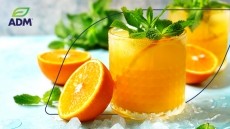Study shines light on photosensitive drink shelf life
drinks and food products should not be underestimated by processors
when considering how to store their products, says a new study.
In research carried out by scientists at the Dipartimento di Scienze degli Alimenti of the Universita di Udine in Italy, measuring atmospheric temperature alone was found to be a less efficient method of predicting beverage shelf life, particularly in lit retail areas.
The study, appearing online ahead of print in the Journal of Agricultural and Food Chemistry , found that the role of lighting should also be taken into account by manufacturers to provide more reliable data on product shelf life.
Light may also offer improvements over using temperature variance as a means for quick prediction of food shelf life, which is not always possible for products such as fresh foods, according to the researchers.
The testing focused on a simulated colour drink formulation by using aqueous model systems containing saffron as a form of colouring, which were then exposed to various temperature and light conditions.
The researchers added that light intensity ranged from intervals between 0 and 100 per cent.
Saffron Saffron, a natural colour extracted from its namesake flower, has a bright yellow appearance relating to the presence of the photosensitive molecules known as crocins, the researchers said.
The study suggested that increased light intensity led to a much faster bleaching of the colour pigment, suggesting that light has a strong impact on crocin oxidation that can compromise the stability of a product.
"These observations clearly evidence that light can speed up quality depletion of photosensitive foods, such as saffron-containing beverages, thus strongly affecting their shelf life," stated the research.
This information was then used to draw up a model that used light intensity as a function in shelf life degradation.
Although the study concentrated predominantly on coloured beverages, the researchers stressed that the testing can be extended for many other photosensitive food products.
Methodology During the testing, lead researcher Lara Manzocco and her team analysed the light impact on samples for three particular factors.
These include changes in colour by using a tristimulus colorimeter, Crocin content through high-performance liquid chromatography (HPLC) and crocin degradation within the liquid simulation by liquid chromatography-mass spectrometry (LC-MS).
Source: Journal of Agricultural and Food Chemistry Published online ahead of print " Shelf Life Modeling of Photosensitive Food: The Case of Colored Beverages" Authors: Lara Manzocco, Giuditta Kravina, Sonia Calligaris, and Maria Cristina Nicoli.


















